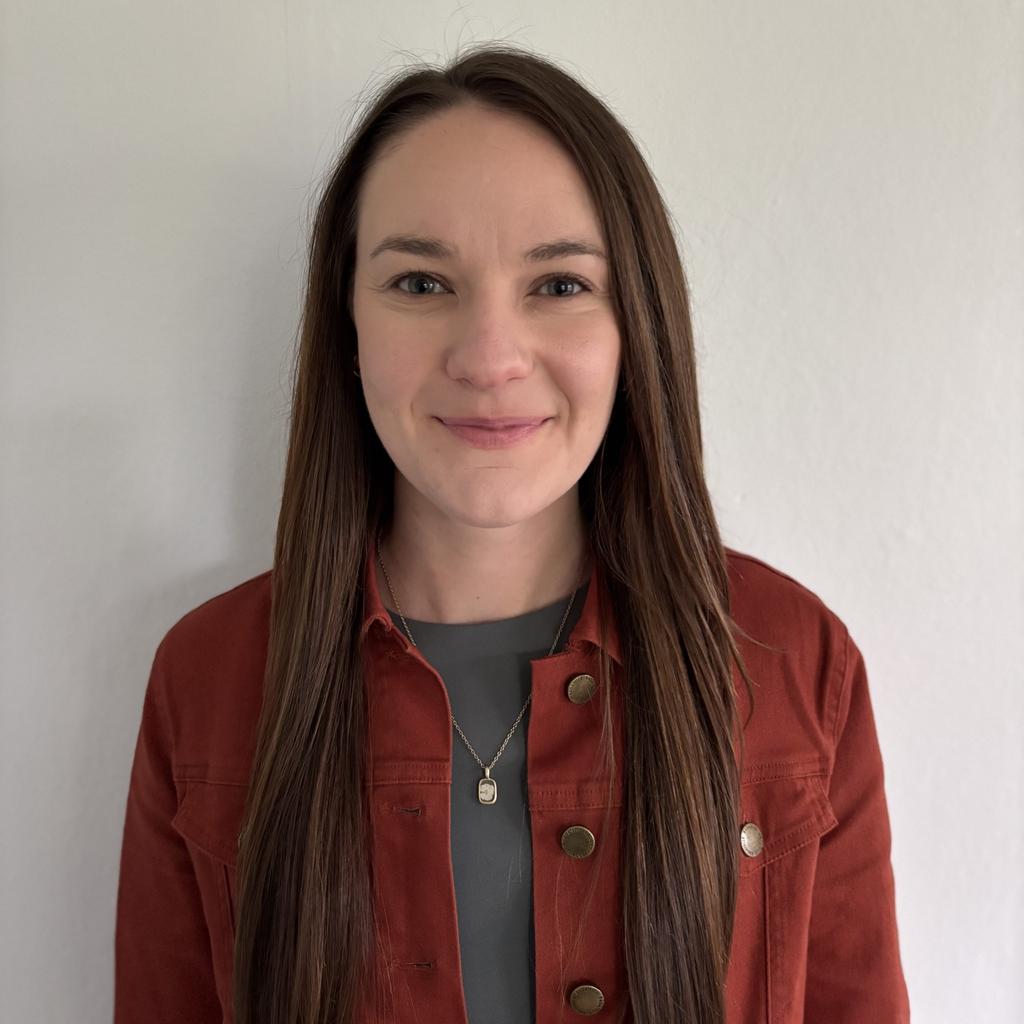Why this resume works
- Highlights industry-specific skills: The applicant’s extensive runway modeling and styling collaboration skills highlight a deep industry understanding, tailoring their expertise to meet the demands of high-profile fashion events.
- Quantifies accomplishments: With measurable accomplishments like boosting brand visibility by 30% and increasing sales by 25%, the applicant reflects their substantial impact on client success.
- Uses action-oriented language: Using action verbs such as “modeled,” “increased,” and “collaborated” effectively captures the applicant’s initiative and dynamic role in projects.
More Fashion Model Resume Examples
Take a look at our fashion model resume examples to learn how to highlight your unique style, runway experience, and versatility. These fashion resume samples will help you craft a resume that stands out in the modeling industry.
Entry-Level Fashion Model
Why this resume works
- Effective use of keywords: By weaving relevant keywords like “brand collaboration” and “fashion trends analysis,” the applicant improves their chances of passing applicant tracking systems (ATS) and standing out to hiring managers.
- Shows digital literacy: The applicant’s savvy use of social media metrics reflects their computer skills and digital literacy for the tech-driven fashion industry.
- Puts skills at the forefront: Emphasizing runway modeling and editorial photoshoots upfrontusing a skills-based resume format makes the applicant’s expertise immediately apparent to potential employers.
Mid-Level Fashion Model
Why this resume works
- Points to measurable outcomes: Increasing brand engagement by 30% through strategic modeling choices reveals the applicant’s ability to drive measurable outcomes and elevate brand visibility across diverse platforms.
- Demonstrates language abilities: The applicant’s language skills in Spanish, French, and Italian indicate their ability for effective cross-cultural communication in international fashion settings.
- Displays technical expertise: Certifications like advanced runway techniques demonstrate technical expertise, underlining a deep understanding of specialized skills essential for excelling in high-pressure fashion environments.
Experienced Fashion Model
Why this resume works
- Showcases impressive accomplishments: The applicant’s role in executing strategic brand campaigns with high ROI reflects significant business impact on a global scale.
- Focuses on work history: Organizing an extensive modeling career into a chronological resume format effectively shows the depth and progression of their professional journey.
- Sections are well-organized: Using bullet points and headers, the applicant creates a resume that’s easy to scan and reader-friendly, making key accomplishments accessible at a glance.
Fashion Model Resume Template (Text Version)
John Patel
Los Angeles, CA 90017
(555)555-5555
John.Patel@example.com
Professional Summary
Accomplished fashion model with 9 years of experience in runway, editorial, and commercial modeling. Excel at increasing brand visibility, collaborating with top designers, and delivering high-impact campaigns. Skilled in fashion trend analysis, styling collaboration, and maintaining peak physical fitness for diverse modeling roles.
Work History
Fashion Model
Elegant Runway Studios – Los Angeles, CA
January 2023 – October 2025
- Modeled for 25+ high-profile fashion campaigns annually
- Increased client brand visibility by 30% through runway and print
- Collaborated with 15 designers during New York Fashion Week
Print and Editorial Model
Vogue Perspectives Agency – Riverside, CA
January 2018 – December 2022
- Featured in 40+ editorial spreads across global magazines
- Helped boost sales by 25% through innovative visual storytelling
- Worked with a team of photographers on 60+ projects worldwide
Commercial Model
Elite Casting Group – Riverside, CA
January 2016 – December 2017
- Appeared in 10+ television and digital advertising campaigns
- Captured 50+ promotional product shots for top-tier brands
- Collaborated with stylists to maintain audience engagement levels
Skills
- Runway Modeling
- Posing Techniques
- Styling Collaboration
- Fashion Trends Analysis
- Brand Promotion
- Public Relations
- Time Management
- Body Fitness and Maintenance
Education
Fashion Institute of Design & Merchandising Los Angeles, California
June 2014
Bachelor’s Degree Fine Arts
University of California, Los Angeles (UCLA) Los Angeles, California
June 2012
Certifications
- Certified Professional Model – International Modeling Association
- Advanced Runway Training – Fashion Excellence Academy
Languages
- French – Beginner (A1)
- Italian – Intermediate (B1)
- Spanish – Beginner (A1)
Related Resume Guides
Advice for Writing Your Fashion Model Resume
Discover our tips on how to write a resume specifically tailored for aspiring and experienced models. Learn how to highlight your unique style, runway experience, and photo shoot skills.
Showcase your portfolio or projects
For artistic and creative roles like fashion modeling, including a portfolio or Having a portfolio or projects on your resume is essential. A portfolio lets you showcase your style, skills, and completed projects, giving potential clients or employers a visual demonstration of what you can do.
Instead of just describing your abilities, you’re showing your work, which can make a big difference in standing out from other models. Linking to an online portfolio on platforms like Behance or hosting a personal website makes it easy for clients to view your work at any time.
When building this section, include freelance work, school projects, and side gigs—they all demonstrate your experience. Treat each project like a job: list the project name, any client or company involved, and provide a short description highlighting your contributions and the impact of your work. For example, you might note a runway show you participated in or a photoshoot that was featured in a magazine.
Showcasing a variety of projects demonstrates your versatility as a fashion model. By presenting your best photo shoots, unique collaborations, and standout performances, your resume paints a complete picture of your talent and professionalism.
Example of a projects section
Spring/Summer Fashion Campaign
Vogue Italia
March 2023
- Modeled for a high-profile editorial shoot featured in the May edition, showcasing the latest designer collections.
- Worked collaboratively with renowned photographers and stylists to create visually compelling imagery.
- Participated in promotional events and interviews to improve campaign visibility.
Runway Show at Paris Fashion Week
Chanel
September 2022
- Walked in three shows during Paris Fashion Week, presenting iconic haute couture pieces.
- Engaged with international press and media, contributing to post-show discussions and interviews.
- Received commendation from industry experts for professionalism and stage presence.
When you’re stuck on how to write your resume, check out these professional resume examples for cool ideas and layouts that work.
Emphasize your most relevant skills
In fashion modeling, having a strong combination of technical and soft skills is essential. Technical skills might include mastering different poses, understanding lighting for photography, or being familiar with industry-specific software. Equally important are soft skills such as communication, adaptability, and teamwork, which help you collaborate effectively with photographers, designers, and stylists.
A dedicated skills section on your resume can highlight these abilities, showcasing both your artistic talents and the tools that support your work.
To make an even stronger impression, integrate your skills into your work experience descriptions. Instead of simply listing past modeling jobs, explain how your posing techniques contributed to striking photos or how your teamwork ensured successful runway shows.
Demonstrating how you’ve applied your skills in real-world settings gives employers a clearer understanding of your capabilities and the value you can bring as a fashion model.
For fashion models, choose a resume format that highlights your portfolio, experience in various modeling gigs, and versatility across different styles.
Choose a professional resume template
When selecting a resume template for a fashion model, it’s essential to choose one that skillfully balances creativity with professionalism. Opt for clean and structured templates that highlight visual hierarchy without being overly flashy. This approach ensures you stand out while maintaining a polished appearance, demonstrating seriousness about your career.
It’s important for the template to effectively showcase key sections like your experience, skills, and portfolio in an organized manner.
Additionally, choosing a format optimized for ATS (Applicant Tracking System) compatibility is wise. Many employers use these systems to screen resumes before they reach human eyes.
To ensure your resume passes through the system successfully, steer clear of overly complicated designs or graphics that might confuse the software. Instead, use simple fonts and clear headings, making your information easy for both machines and humans to read and process.
Using a Resume Builder can help you create a stylish and professional fashion model resume quickly. Just pick a template, fill in your details, and you’re ready to impress!
Format your resume properly
Using a suitable resume format ensures your experience is easy to read and appears professional. For fashion models with less experience, a functional resume is ideal. It emphasizes skills such as posing, runway walking, or photo shoot abilities over job history, showcasing what you can do in modeling rather than concentrating on previous jobs.
5 resume formatting tips
- Use clear section headings: Label sections like “work experience” and “projects” for easy navigation.
- Choose a consistent font: Opt for fonts such as Arial or Calibri in 10-12 pt size for clarity.
- Use bullet points: Highlight experiences and skills with bullet points to improve readability.
- Limit to one page: Aim for a single-page resume unless you have extensive modeling experience.
- Ensure proper alignment and spacing: Keep consistent spacing and align text neatly for a clean, professional appearance.
You can use our ATS Resume Checker to scan your resume for potential issues and receive on-the-spot feedback to improve your resume score.
FAQ
Do I need to include a cover letter with my fashion model resume?
Yes, including a cover letter with your fashion model resume can set you apart from other job seekers. A cover letter allows you to highlight your unique style, experiences, and passion for the fashion industry, which might not be fully captured in your resume.
For instance, you can mention specific designers or agencies you’ve worked with and any notable campaigns or photoshoots that showcase your versatility and dedication.
You could consider using our Cover Letter Generator to craft a professional cover letter tailored to the modeling industry.
Additionally, reviewing cover letter examples specific to fashion models can provide inspiration and guidance on how to best present yourself in this competitive field.
How long should a fashion model’s resume be?
For a fashion model, a one-page resume often works best, focusing on the most effective aspects of your career, such as key modeling gigs, agencies represented by, and notable collaborations. This keeps it sleek and to the point, much like a portfolio.
However, if you have extensive experience with runway shows or international assignments, a two-page resume can be appropriate. Just ensure each entry is relevant and showcases versatility in various modeling roles.
Explore our guide on how long a resume should be for more examples and tips tailored to your experience level.
How do you write a fashion model resume with no experience?
Creating a resume with no experience for a fashion model can feel challenging, but it’s all about showcasing your potential and passion for the industry. Here are a few tips:
- Include a strong objective statement: Start with a brief summary that highlights your enthusiasm for modeling and any related qualities like confidence, poise, and ability to follow direction.
- Showcase relevant skills: Emphasize skills such as posing techniques, understanding of fashion trends, physical fitness, and comfort in front of the camera. Even if these were developed informally or through hobbies, they are still valuable.
- Highlight education: If you have taken any modeling classes or workshops, include them. Mention any acting or drama courses as well since they contribute to performance skills.
- Use non-modeling experience creatively: Leverage experiences from other areas that demonstrate professionalism, reliability, and communication skills. Jobs in retail fashion, for instance, can show your familiarity with clothing and customer service.
See our guide on writing a resume with no experience for more detailed advice on crafting a resume specifically tailored to entry-level fashion model positions.
Rate this article
Fashion Model
Additional Resources
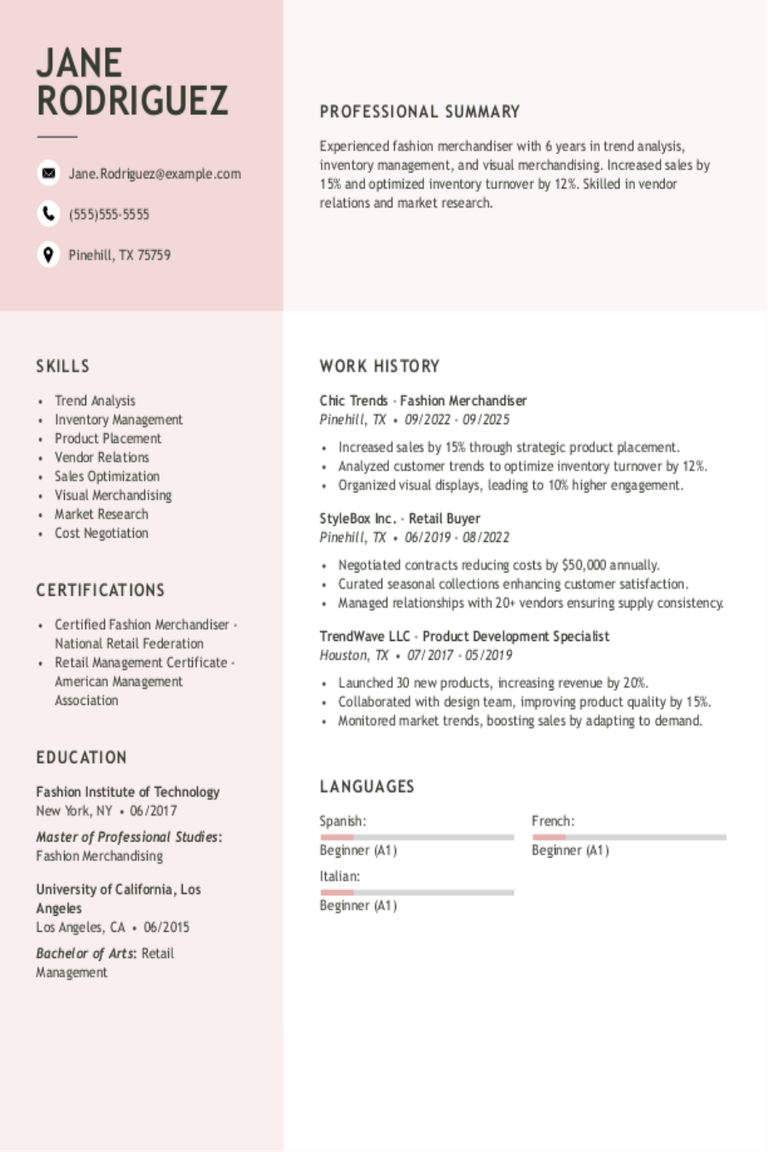
Fashion Merchandiser Resume Examples & Templates for 2025
Learn how fashion merchandisers showcase their skills in spotting trends and boosting sales. These examples and tips will help you create a resume that stands out to hiring managers by
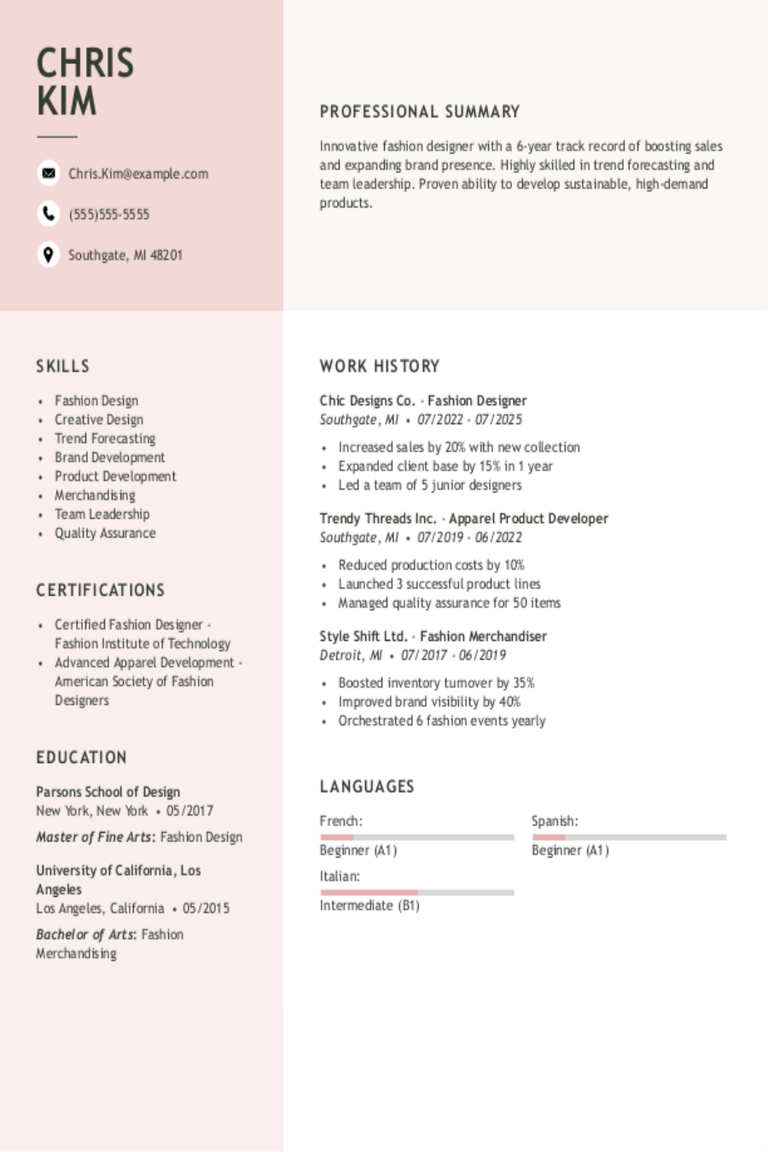
Fashion Resume Examples & Templates for 2025
Explore fashion resume examples to see how to highlight your design skills, trend awareness, and ability to work in fast-paced environments. Use these tips to showcase your creative projects and
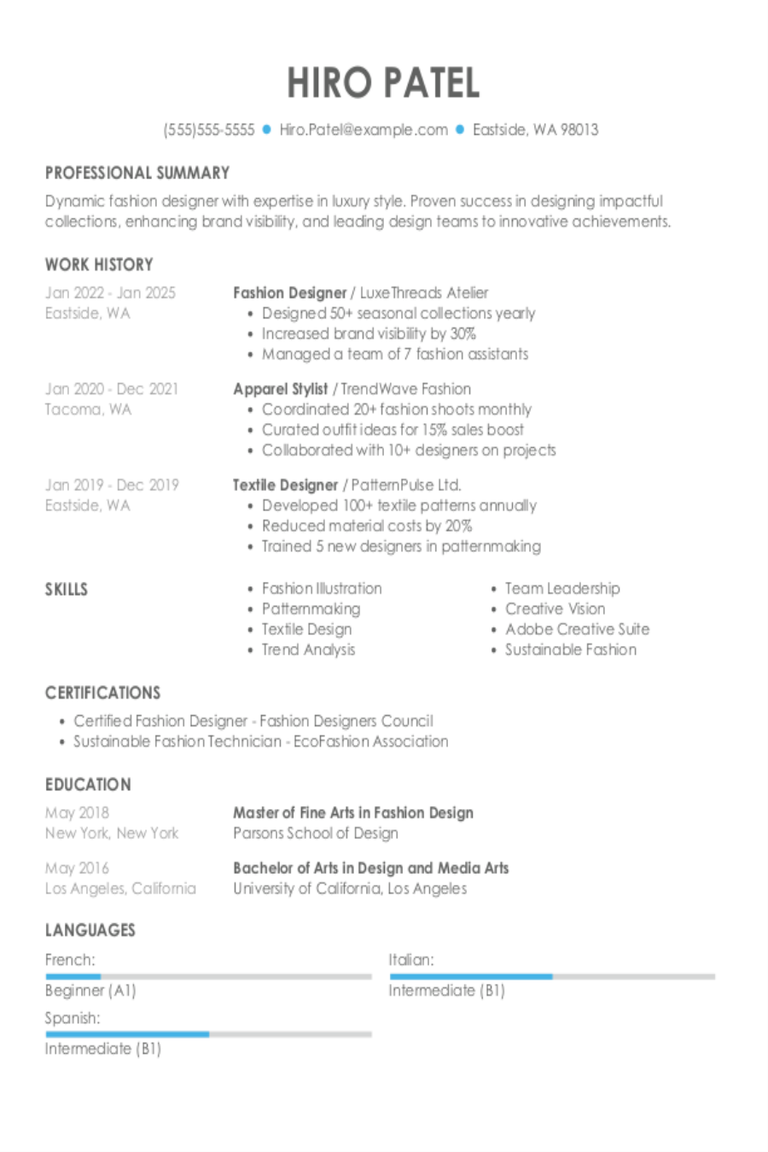
Fashion Designer Resume Examples & Templates for 2025
Discover fashion designer resume examples that show how to highlight your creativity, sketching skills, and knowledge of fabrics. Learn to showcase your design experience and make your fashion ideas stand
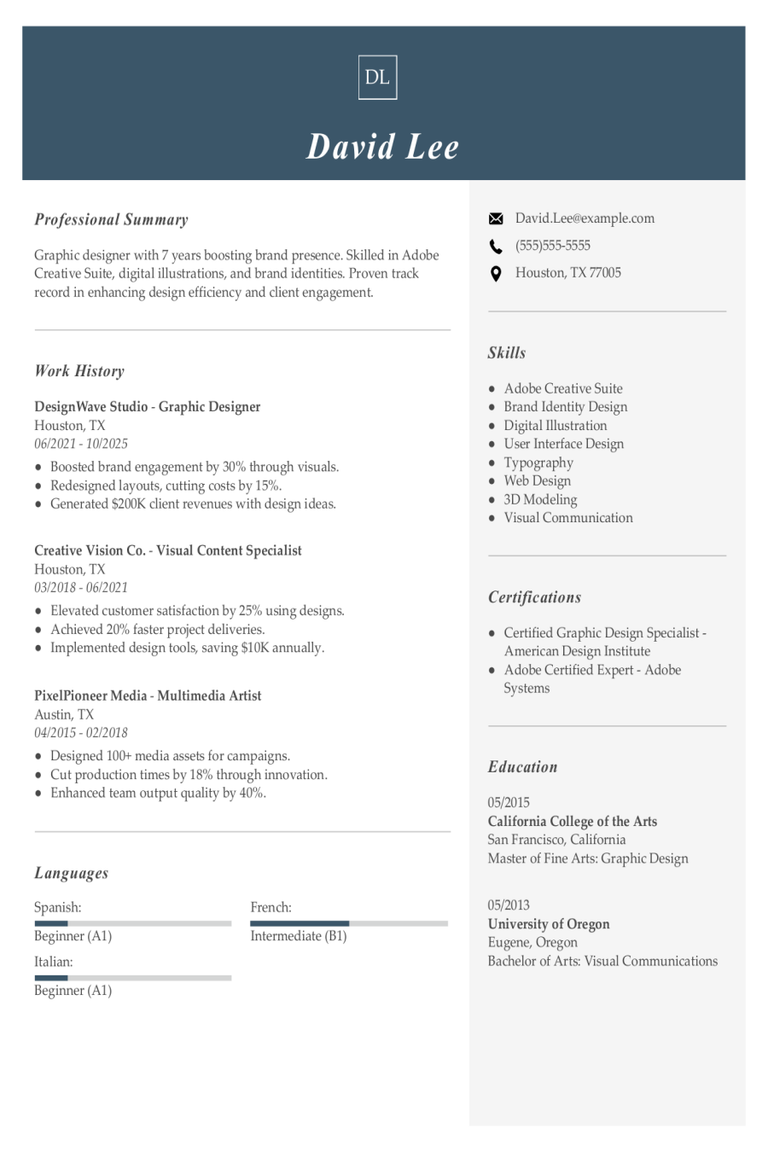
Graphic Designer Resume Examples & Templates for 2025
Explore graphic designer resume examples to learn how to showcase your creativity, design expertise, and project experience. These examples and tips can help you demonstrate your ability to craft visually
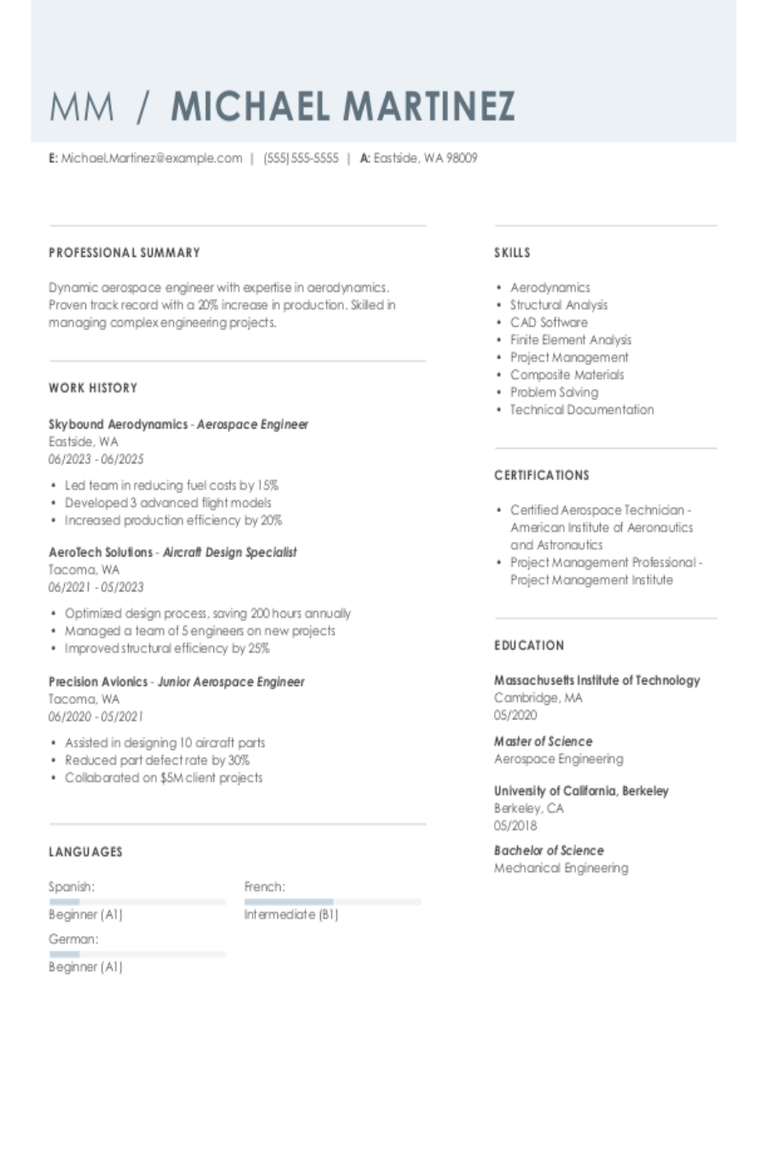
Aerospace Engineer Resume Examples & Templates for 2025
Explore aerospace engineer resume examples that show you how to highlight your experience designing aircraft, testing systems, and solving technical problems.Build my resumeImport existing resumeCustomize this templateWhy this resume
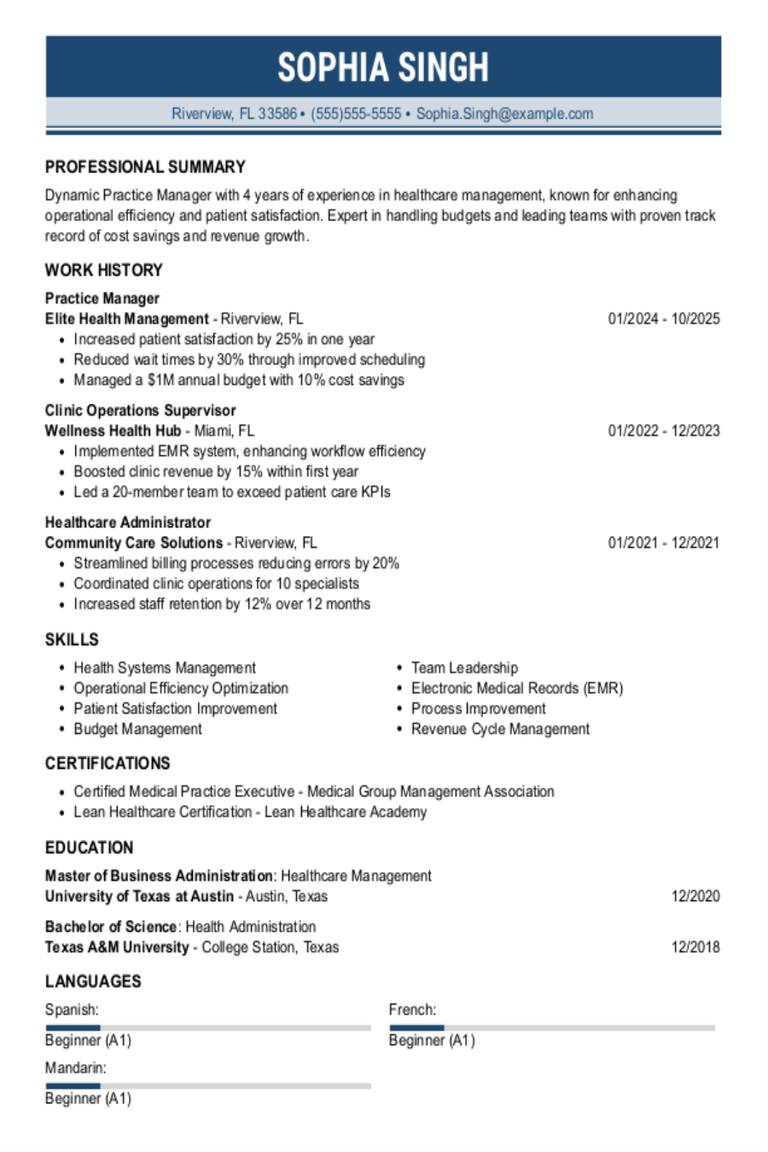
Practice Manager Resume Examples & Templates for 2025
Explore practice manager resume examples and tips to learn how to highlight your relevant skills and experience managing staff schedules and improving patient experiences.Build my resumeImport existing resumeCustomize this templateWhy
